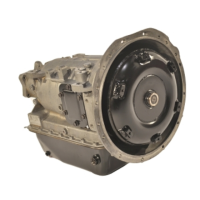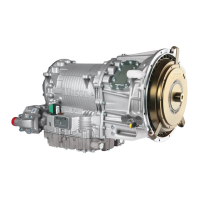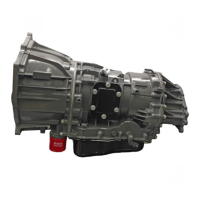34
5–9. INSTALLING, ADJUSTING MECHANICAL
MODULATOR CONTROL
• Connect the engine (throttle) end of the modulator cable housing to its
mounting.
• Open the engine throttle fully and check whether the throttle linkage will push
or pull the cable core when the throttle linkage is moving toward full throttle
position. If it will push the cable core, then push the cable core until it reaches
the end of its travel. If movement of the throttle linkage toward full throttle
position will pull the cable, then pull the cable to the end of its travel.
• Adjust the clevis or rod end on the cable core until it registers with the hole in
the throttle linkage lever and the connecting pin can be freely inserted. With
pin removed, rotate the clevis or rod end one additional turn counterclockwise
(viewing cable core from its end) for pull-type arrangement, or one additional
turn clockwise for push-type arrangement. Install the clevis pin or rod end to
connect the throttle linkage and cable. Tighten the lock nut against the clevis
or rod end. This adjustment assures the ability to achieve full throttle on the
engine without interference from the modulator control.
• Check the travel of the cable core when the throttle is moved from fully open
to fully closed position. The system is designed to provide a travel of 1.187–
1.560 inches (30.15–39.62 mm).
• The most common type of mechanical control is the cable-operated actuator
with a lever to vary the force on the modulator valve. This type of control is
convertible; either push or pull force can be used on the cable when the
throttle is opened. Ensure the modulator control, when connected to the
throttle linkage, provides an increasing force against the modulator actuator
rod in the transmission when the engine throttle is moved toward the open
throttle position.
• Later model actuators include a lever marked PUSH on one side and PULL on
the opposite side. When the modulator control cover is removed, the word
PUSH or PULL can be seen and indicates how the device is assembled.
• Conversion to the opposite mode of operation is only a matter of reassembling
the internal parts. Reverse the positions of the lever, spring, and thimble to
convert it.
• Be sure the modulator control action is as required.
NOTE: There are 12V and 24V electric modulators available as of
June 1994. See SIL 27-TR-94.

